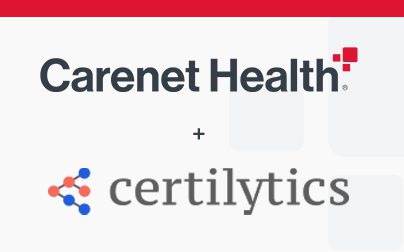
Consumers are beginning to expect better healthcare experiences. And we know that delivering those experiences can support improved outcomes, increased revenue and lowered costs. But the fact is, you can’t achieve those goals without successful consumer engagement.
We recently sat down with John Erwin, Carenet Health CEO, to explore this topic further, including how specific engagement strategies can serve as vital bridges between consumers and the healthcare ecosystem.
Q: Let’s start with the big picture. Healthcare consumerism is a hot topic—and CMS, health plans and providers all seem to be focusing more on consumer satisfaction. Where does healthcare engagement fit into that conversation?
A: The COVID-19 pandemic accelerated consumerism in healthcare. Health plan members and patients became more aware of their choices, whether it’s a telehealth versus in-office visit, at-home lab work or making an appointment by text. There’s an ample supply of disruptors who want to capitalize on those changing consumer expectations. So healthcare organizations are rethinking long-held paradigms, and that includes how they engage with their members and patients … and what the typical consumer’s service journey looks like.
They’re realizing that consumer connections and support, regardless of what channel they’re happening in and when they’re happening, are critical building blocks of the healthcare experience. Each engagement touchpoint is a fuel for satisfaction. And responding to consumerism means improving how you engage with those you serve and those you want to serve in the future.
Q: You’re also a big proponent of leveraging healthcare engagement to help solve key industry challenges. A significant one we’re facing now is the deferred care crisis brought on by the pandemic. How important is consumer engagement to getting a handle on this problem?
A: Closing preventive and treatment care gaps has always been a challenge, but it’s a bigger issue today—Americans of all ages have put off care and screenings. I see convenience and choice as two factors that will be instrumental in helping people make and keep their appointments.
From a convenience standpoint, consumers expect to access care when and where they want it, including from the comfort of home. The range of virtual and at-home care options will be important for organizations to offer when reaching out to patients and plan members.
It’s also essential to implement a tech-enabled, multichannel approach to that outreach, because we know that using more channels outperforms the use of single channels by as much as 300%. And we know from our work at Carenet that the right engagement teams, with the right understanding of appointment refusals, using the right channels, can generate at least three times the return on investment. We should also be asking healthcare consumers how they want to engage—and then deliver information, service and care how they want it.
Q: Telehealth boomed during the pandemic, and patients, providers and payers experienced the benefits. But now utilization is dropping. How can we keep that momentum going with consumer engagement?
A: One of the most interesting concepts we’re seeing is the need for a digital front door to support telehealth use. We have to realize that healthcare can be confusing, and even taking the first steps can feel overwhelming to consumers. A digital front door can simplify the experience, giving individuals a single starting point—one phone number, one digital place—where they can start engaging with their plan or provider. From there, consumers can be routed to general support services, registered nurses for advice and symptom triage, live virtual physician consults for situations that require an MD, behavioral health assistance … or whatever support fits their needs best. But it all starts with streamlined engagement that helps them navigate the ecosystem and guides them to telehealth as an option.
Q: Remote patient monitoring and hospital-at-home care have advanced considerably. How do you see patient engagement playing a more impactful role moving forward?
A: Engagement can be used to pique consumer interest in digital health monitoring, motivate patients to enroll in remote care programs, and encourage action and follow-through. In fact, we think that upfront engagement is really going to be critical to laying the groundwork for long-term RPM success. Frankly, well-designed patient engagement is missing in a lot of initiatives right now. AI-driven communications and other innovations can be leveraged, absolutely, but we can’t lose sight of the importance of both human and digital interaction for trust-building, troubleshooting, problem-solving and coaching.
Q: It’s no secret that health inequities exist and addressing social determinants of health continues to be a challenge. How can we approach engagement differently to work toward solving this issue?
A: This is another area where we have to anchor our digital work with one-on-one human interactions. For instance, let’s use text messages to get conversations started, to introduce risk assessments and surveying that engages about potential needs. Then let’s deploy trained engagement specialists to build relationships that can be transitioned back to digital for removing care obstacles and initiating next steps or connecting with resources. Telehealth can also be a powerful tool for addressing social determinants of health—one that’s underused.
Actually, to bring it back full circle, addressing social determinants—like so many of the industry’s challenges—means using all of the tools we have to address the consumer’s desire for service, convenience, simplicity and choice.
That’s the mindset the healthcare industry needs today—thinking in a more retail-oriented, consumer-centric way that creates outstanding experiences while driving the revenue and cost-efficiencies that providers and payers need to succeed.
—
To learn more about the value of using one-on-one engagement to address healthcare’s challenges, download our white paper. Or, to speak with our healthcare consumer engagement experts, please reach out.



